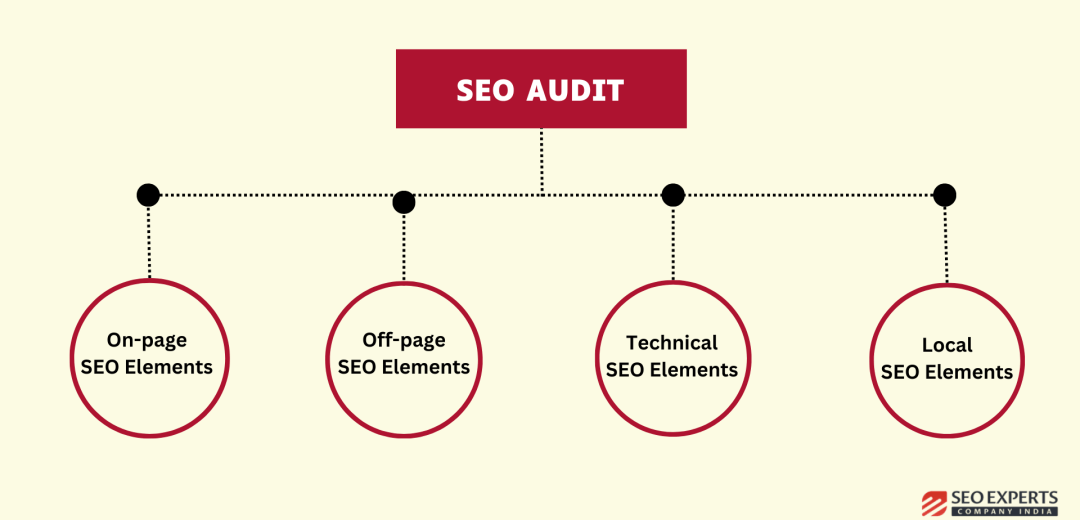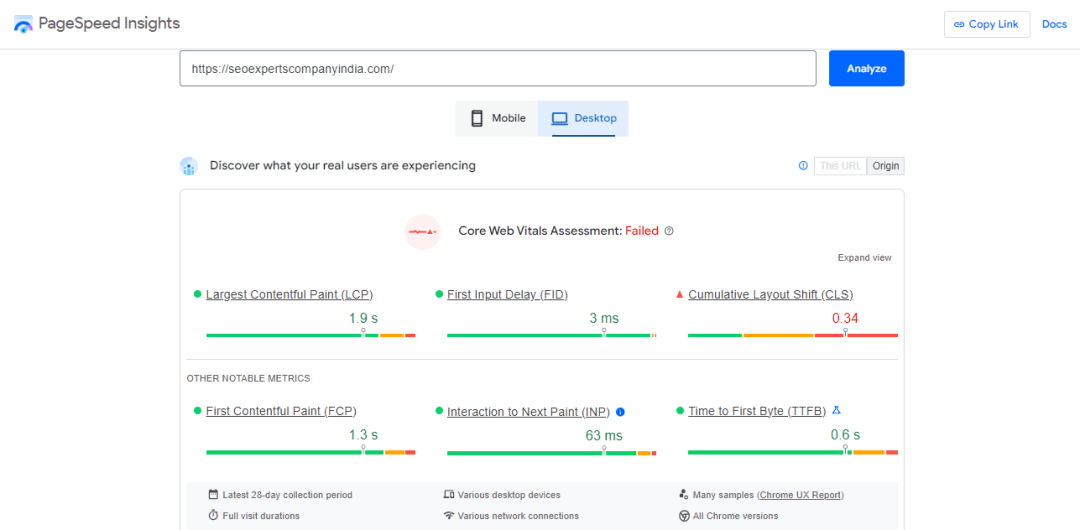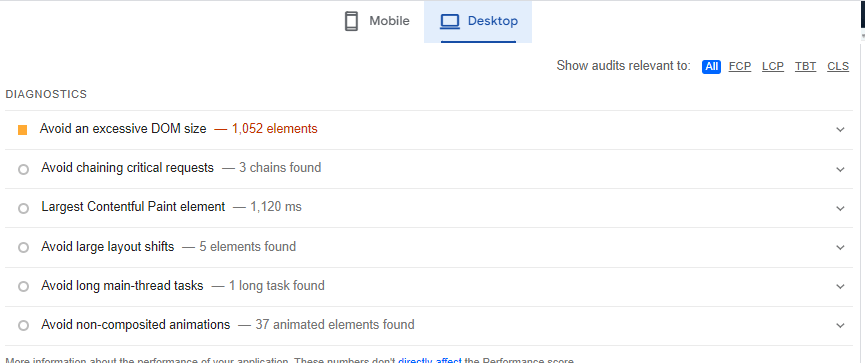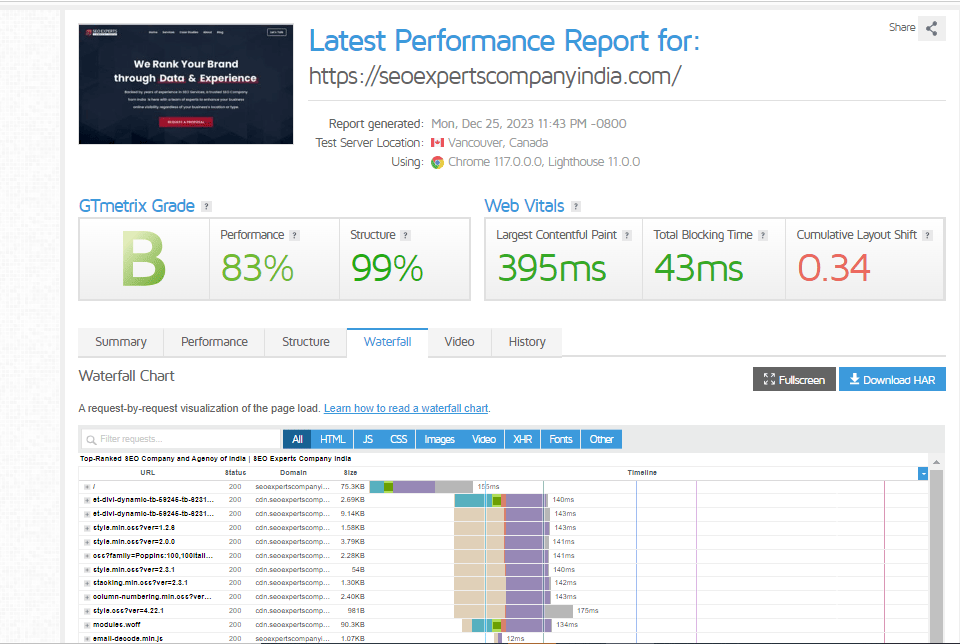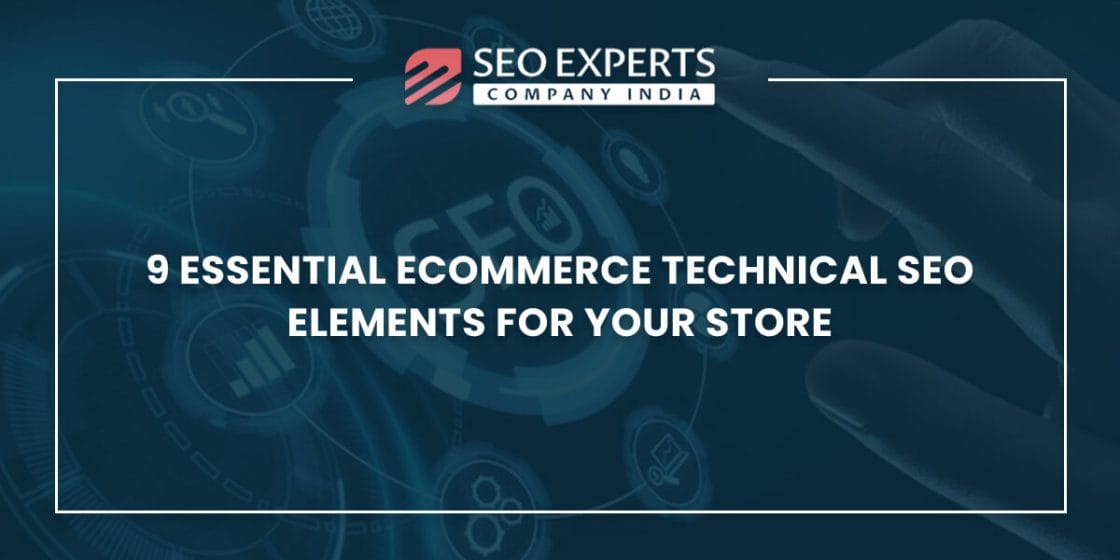Conducting an SEO audit evaluates how well your website is optimized for search engines. It is like giving your website a check-up to identify errors that prevent your site from ranking in the SERPs.
Each SEO audit we conducted helped us gain valuable insights– how important good content is, how technical aspects can affect a site, and why backlinks and the right keywords matter. We learned that it’s not just about fixing things; it’s about making websites more useful and easier to navigate for people as well as search engines.
In this article, we’ve transformed our firsthand experiences into powerful strategies. Dive into the blog to discover practical tips and tricks that can help boost your website’s performance.
What is an SEO audit?
An SEO audit is the prime and foremost step of any SEO campaign, which includes a thorough inspection of your website. It is performed with the goal of determining factors that might hinder a site’s performance in the search engine rankings and identifying opportunities to gain more online visibility.
Just like your body needs regular check-ups to identify areas that need improvement, a website requires an SEO audit to evaluate its online health.
Why an SEO Audit is Important?
An SEO audit is a journey that bridges the gap between where you are and where you want to be. Besides attracting more organic traffic and enhancing online presence, here are some additional benefits of performing an SEO audit:
- Keeps your SEO strategy up to date.
- Helps figure out what’s working for your website and what’s not.
- Discovers website’s SEO issues so that they can be fixed.
- Helps your website keep updated with the frequently changing Google algorithms.
- Improves site performance, enhancing the user experience.
- Helps discover missed opportunities through competitor analysis.
Sharing Insightful Strategies on How to Perform an SEO Audit
With a track record spanning over twelve years in the industry, we have a rich history of assisting numerous clients in achieving top positions in search engine result pages. Drawing from our extensive experience, we are pleased to share some valuable strategies that will help you conduct an SEO audit for your website.
1. Have Clear Objectives
Before starting an SEO site audit, ensure you have clear goals and objectives. Find answers to questions like “What is the end goal of this SEO audit?” “Who is my target audience?” “What are the primary objectives of my website?” etc.
You should be specific about what aspects of your website’s performance you want to evaluate and improve. These well-defined targets guide your SEO strategy, assisting you to focus on areas that need improvement.
At our end, we always prioritize understanding our clients’ expectations and end goals before starting an SEO site audit. Is it increased traffic, higher rankings for specific keywords, improved user engagement, or something else? These insights shed light onto areas that need extra attention and help us align our SEO strategies with clients’ business goals.
2. Crawl Your Website
Next, you must run a website crawl by putting your website’s URL on tools such as Google Search Console, Screaming Frog, etc., to analyze the website’s performance. This process helps in gathering important data about the site’s performance, uncovering issues like broken links, duplicate content, missing descriptions, titles, and other elements that might hinder your website’s performance.
We personally believe that running a website crawl establishes a good starting point for tracking progress and improvements.
3. Check for On-page Issues
Examine the individual pages on your website to ensure that they are well-optimized for search engines. Here are a few elements that you must take care of while evaluating the on-page factors on your website:
Title tags
As the name suggests, “title tags” are HTML elements that specify the web page’s title. These are the clickable headlines in the search results, summarizing the page’s content. Examining if your title tags are optimized for search engines is very important.
Drawing from our experience, we can say that having a title tag that is short, concise, and matches the user’s search intent helps improve the website’s click-through rate.
Therefore, while optimizing title tags for our clients, we try to keep it between 60 characters or less. Another thing we ensure is incorporating the keywords in the title tag– target keywords relevant to the content and the user’s search intent.
Pro tip: Double check that your website has a unique title tag for each page on your website because duplicate titles often confuse search engines.
Meta Descriptions
Meta descriptions appear below the title tags and briefly summarize a page’s content to its visitors. They form a crucial part of an on-page SEO audit and help improve website visibility.
There are a few elements we suggest you verify while auditing meta descriptions:
- Check whether the meta descriptions are below 155-160 characters (which is the ideal length).
- Verify if the meta description aligns with the user’s search query.
- Ensure there is no meta description duplication across the website.
Header Tags
Header tags are HTML elements that are used to hierarchically structure content on a webpage. Optimizing header tags is essential as they help search engines understand your content and make it more readable for the users.
Header tags typically range from <h1> to <h6>, with H1 being the main title and H2 and H3 being the subheadings. Moving down– H4, H5 and H6 define further subsections.
Our recommendation is to check whether the header tags maintain a clear hierarchy, beginning with H1 as the main heading and proceeding sequentially down to H6. This hierarchy not only enhances readability but also helps search engines better understand the relationship between different sections of your content.
Additional tip: Always try to incorporate (not stuff) relevant keywords within the header tags to help users and search engines understand the content.
Content Quality Optimization
As we all know, “Content is King” in today’s SEO world, therefore, checking if the content is optimized for search engines is extremely crucial. Our years of experience have taught us that if your content development strategies don’t align with the users’ search intent, then it is as good as ‘lock without a key.’
Sharing expert insights that we follow while optimizing the content for our clients:
- Keyword Optimization: Align content with users’ search intent by employing relevant keywords.
- Check the content quality: Evaluate the existing content quality and check if the content is updated, relevant, and high-quality.
- Engagement Elements: Enrich content by incorporating visuals like images, videos, and infographics.
- Readability: Utilize clear headings, brief paragraphs, and accessible language.
- Check for content gaps: Check for the content gaps in your content strategy to look for the missing opportunities.
Internal Links Optimization
Internal linking involves connecting one page on a website to another relevant page using hyperlinks. Optimized internal links help search engines crawl and index the website in a better way. It’s essential to regularly audit internal links to confirm they direct visitors to accurate and updated content.
In our site audits, we give special attention to internal links. We make sure these links are not only relevant but also use descriptive anchor text that effectively guides both users and search engines. Based on our firsthand experience, we recommend our readers to emphasize the importance of clear and informative anchor text in their own content.
Besides these, we suggest you pay attention to the following on-page factors:
- Call-to-action buttons: Check if your call-to-action buttons are attractive and in place for users to click.
- Webpage design: Evaluate the webpage design, layout, and navigation to ensure a seamless user experience.
4. Off-page SEO Audit
Off-page elements include factors outside of the website. External factors play a crucial role in determining your website’s authority and credibility; therefore, assessing and optimizing these elements is essential to enhance online visibility.
The major aspect of an off-page SEO audit is “Backlinks.” Hence, the audit mainly revolves around verifying if the link-building strategies align with the search engine guidelines.
Sharing some key factors that we consider during our off-page SEO audits, cultivated through years of experience. By following these steps, you can thoroughly examine your website and leave no stone unturned in optimizing its SEO performance.
Backlink Analysis
- Check the source of the backlinks: Evaluate whether the backlinks your website received or is receiving come from an authoritative source. We advise you to run a backlink gap analysis to compare your backlink profile with that of your competitors to discover linking opportunities.
- Assess the quality of backlinks: Assess the quality of backlinks and whether they are high-quality and relevant to your website. Remove any spammy or irrelevant backlinks that you encounter during the process.
- Analyze anchor text: Check that the anchor text used in the backlinks is suitable and does not excessively target specific keywords. We always make sure that the anchor text is not over-optimized as it sends negative signals to search engines.
Social Media Activity
Evaluate and assess that your social media profiles are up-to-date, optimized, and relevant to your brand.
Guest Posts and Brand Mentions
Review the quality, relevance, and authority of your guest posts on external websites. Besides, monitoring the brand mentions across the web helps maintain a positive reputation.
5. Examine Technical Elements
Technical aspects are crucial for the smooth functioning of a website and are related to performance and overall customer experience on your website. It includes evaluating and optimizing behind-the-scenes elements that influence how search engine bots crawl and index your website.
Based on our personal experience, we are sharing a breakdown of what you should examine while performing a technical SEO audit for your website:
Page Speed
Check the page loading speed and performance of your website. We use tools like Page Speed Insights to test and improve the website’s speed and performance. All you have to do is put your website’s URL to test and click “analyze.”
The tool also provides detailed insights into the factors impacting a page’s loading speed on both mobile and desktop devices, along with practical solutions to enhance overall performance.
Our other favorite tool for checking the page speed is GTmetrix, which has an additional waterfall charts feature that helps to quickly examine and identify speed optimization opportunities.
Mobile Optimization
Mobile optimized website is one of Google’s ranking factors, therefore, verifying if your website is optimized for all screen sizes, including mobile phones and tablets, is an essential step in the SEO audit process.
You can check whether your website is mobile-friendly or not by using Chrome Lighthouse (because Google has officially dropped its Mobile-friendly test tool as of December 4th, 2023).
Site Structure
Website architecture refers to how the web pages are structured, organized, and linked together within a website. While auditing the site structure, we first examine how the pages are organized, interconnected, and accessed across the website. During the process, we review the navigation menus, internal linking as well as URL structure.
One valuable tip we’ve learned from experience is the importance of aiming for a flat website structure, which plays a crucial role in preventing search engine crawl issues. This setup ensures easier navigation for both users and search engines.
We recommend using tools like Screaming Frog or SEMrush to analyze and evaluate if your website requires reorganization of web pages.
Check for Duplicate Content
Duplicate content refers to identical or very similar content that exists on multiple web pages. Duplicate content can greatly affect user experience and negatively impact search engine rankings. Therefore, we strongly advise to update or delete duplicate content for improved online performance.
We use specialized tools like Copyscape and Siteliner to crawl and identify duplicate content across various pages.

Ensure to have an XML Sitemap
An XML sitemap is a map for search engines that enlists all the important web pages on the site. It is important because it helps search engines crawl and index your site better.
After working for numerous businesses, we have learned that it’s a good habit to regularly update the XML sitemap, particularly after site modifications or adding new content. This practice ensures search engines stay informed about the most recent changes on your website.
You must analyze your XML sitemap to ensure it is properly structured and accessible.
Check for the HTTPS version of your website
HTTPS (Hypertext Transfer Protocol Secure) provides a secure connection between a user’s browser and a website’s server. This encryption is crucial for protecting sensitive information and building user trust.
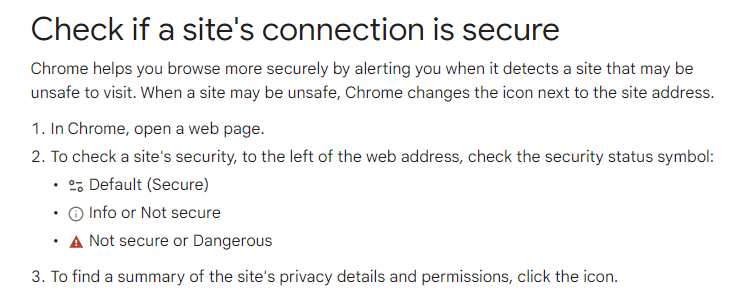
While conducting a site audit, we advise you to verify if HTTPS is correctly implemented across your website. This involves examining if all pages (including subdomains) are secured with SSL/TLS certificates.
Another valuable lesson that we have learned through our experience is to review if the site properly redirects from HTTP to HTTPS versions. This ensures that all visitors are automatically redirected to the secure version, which is essential for maintaining consistency.
Additional tip: Set up alerts to monitor SSL certificate expiration dates and renew them ahead of time to avoid service disruptions.
6. Evaluate Local SEO Elements
A local SEO audit focuses on assessing and optimizing your search engine rankings to improve website’s visibility in the local search results. We conduct local SEO audits for businesses serving a specific geographical location. We mainly focus on the following elements while conducting the audit, which helps attract more visitors to the website:
- Google My Business Optimization: Make sure that your Google My Business Profile is accurate, complete, and optimized for the search engines.
- Check local citations: Don’t forget to review the consistency of your business information, especially NAP information across various platforms.
- Identify and review local keywords: Identify, analyze, and review the usage of local keywords in your content to attract local audiences.
- Monitor reviews and ratings: Monitor and manage the reviews across platforms like Google, Bing, and others. Acknowledge customer feedback, be it negative or positive.
7. Perform Competitor Analysis
Competitor SEO analysis or competitive SEO audit is a crucial part of the SEO process that focuses on monitoring your competitor’s actions, strategies, and performance. This process can help you gain insights and find opportunities to improve your SEO efforts.
First, you must identify your competitors– those competing for the exact keywords and the same target audience. Next, you should analyze different aspects like the keywords they are targeting, their content strategy, backlinks, on-page, off-page, and technical elements.
Through firsthand experience, we’ve learned that it is important to understand competitors’ SERP performance and the content they excel in, as it helps refine strategies accordingly.
Drawing from our experience, here are additional tips to assist you in conducting a comprehensive SEO audit.
- Verify if your curated content satisfies the user search intent and is sustainable and relevant to the industry.
- Fix orphan pages, i.e., pages with zero internal links.
- Don’t simply run after keyword stuffing. Always verify if your keywords align with user intent.
- Check and fix for indexing issues.
- Check and fix crawling issues.
- Check for duplicate versions of your website.
- Keep a check on your core web vitals for improved page performance.
- Check your organic traffic and monitor your rankings.
How Our Team of Experts Can Help You in Doing SEO Audit of Your Website with Exclusive Services
Every SEO campaign is incomplete without the SEO audit. This essential step helps understand the detailed drawbacks of the website, showing exactly what needs to be fixed for an optimized performance.
Think of an SEO audit as a check-up for your website’s health. It is something that needs to be done at regular intervals to keep your site running. We understand that it might seem like a daunting task, but don’t worry– we are here to help. If you want to save time and effort, you can partner with an expert SEO agency like ours. Our team of seasoned professionals knows the ins and outs of SEO and digs deep into your site to ensure that your website performs best in the SEO world.
Here’s how we at SEO Experts Company India ensure that your website performs exceptionally well in the search engines with our top-notch SEO audit:
We understand the goals and objectives of the client: Before we kickstart the SEO audit process, we dig deeply to understand the goals and objectives of the client. We invest time to learn about the company and determine whether it requires an e-commerce SEO, international SEO, or local SEO. This step requires thorough research because the entire SEO audit process depends upon the client’s end goals.
We set a date range for the audit: We set a date range for the audit and choose a specific time period to analyze your website’s performance. This helps to periodically compare the data, be it monthly, quarterly, or annually. This trick assists in determining the key trends, making it easier to track progress and make changes.
We conduct a competitor analysis: We keep track of your competition to find missed opportunities. We perform a complete analysis of your competitor’s backlink profile, content, keywords, technical aspects, rankings, etc.
We run keyword gap analysis: We analyze and check if your website uses popular and high-quality keywords. Besides this, we examine if your website is employing relevant keywords in the content that match users’ search intent. Further, we run a keyword gap analysis to find the keywords that your competitors are ranking for. This helps understand what areas need to be improved to gain a competitive edge in search engine rankings.
We analyze the technical aspects: We ensure your website is technically sound by checking the elements, such as site speed, mobile friendliness, site structure, duplicate content, structured data, sitemaps, schema markup, HTTPs, etc., for smooth crawling and indexing.
We evaluate your content based on search intent: We examine and evaluate your content based on the search intent and further analyze the content gaps to find gaps and missed opportunities to help you outperform your competitors.
We evaluate your backlink profile: We check and optimize your backlink profile to remove spammy and irrelevant backlinks. Besides, we practice robust link-building strategies to acquire high-quality links from authoritative websites.
We evaluate your on-page factors: We leave no stone unturned to evaluate on-page factors for your website, including title tags, meta descriptions, header tags, images, internal linking, URL structure, etc., which impact conversion rates and user experience.
We evaluate your off-page factors: We conduct an off-page SEO audit for your website to assess factors like guest posts, links, social promotions, press releases, etc., that greatly influence your search engine rankings.
We evaluate your local SEO factors (when required): Our company evaluates your website’s local SEO factors, which include your Google My Business listings, local citations, monitoring your reviews and ratings across different platforms, etc. We also track your firm’s local search performance using Google Analytics. It becomes essential to evaluate these elements when a company focuses on targeting a specific geographical location.
We list and analyze the insights: Our next step is to document and analyze the findings from the SEO audit insights. While doing so, we also consider other important factors, such as organic traffic, domain rating, traffic value, site health, etc.
We investigate the “whys” and establish strategies: After conducting the complete SEO audit for your website and evaluating all the “whys,” we move on to develop robust strategies to fix your SEO issues.
We implement our strategies: In our final step, we implement the planned strategies to help your website achieve organic growth, attract more visitors, and rank in the search engines.
Contact us to learn more about our services. We would be more than happy to conduct a free SEO audit for your website.

